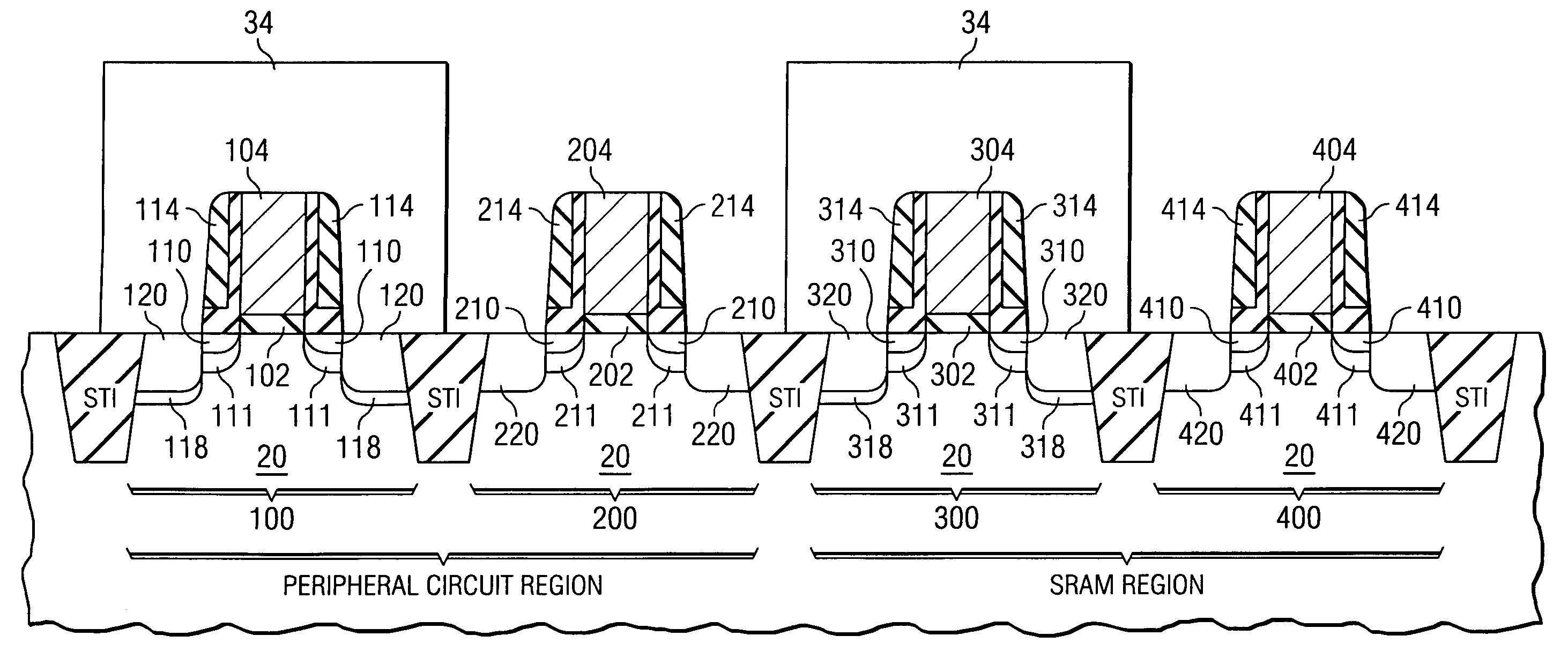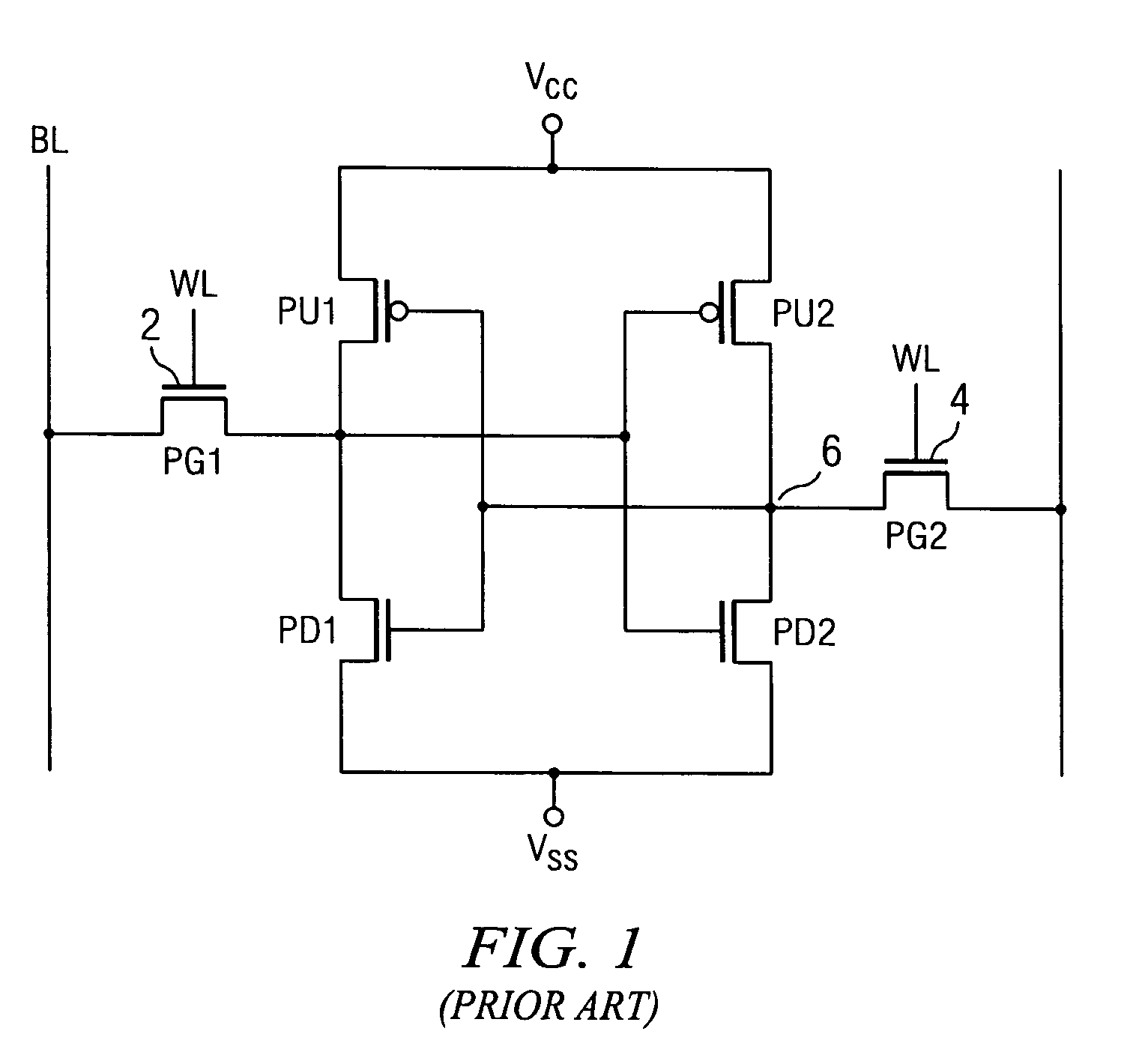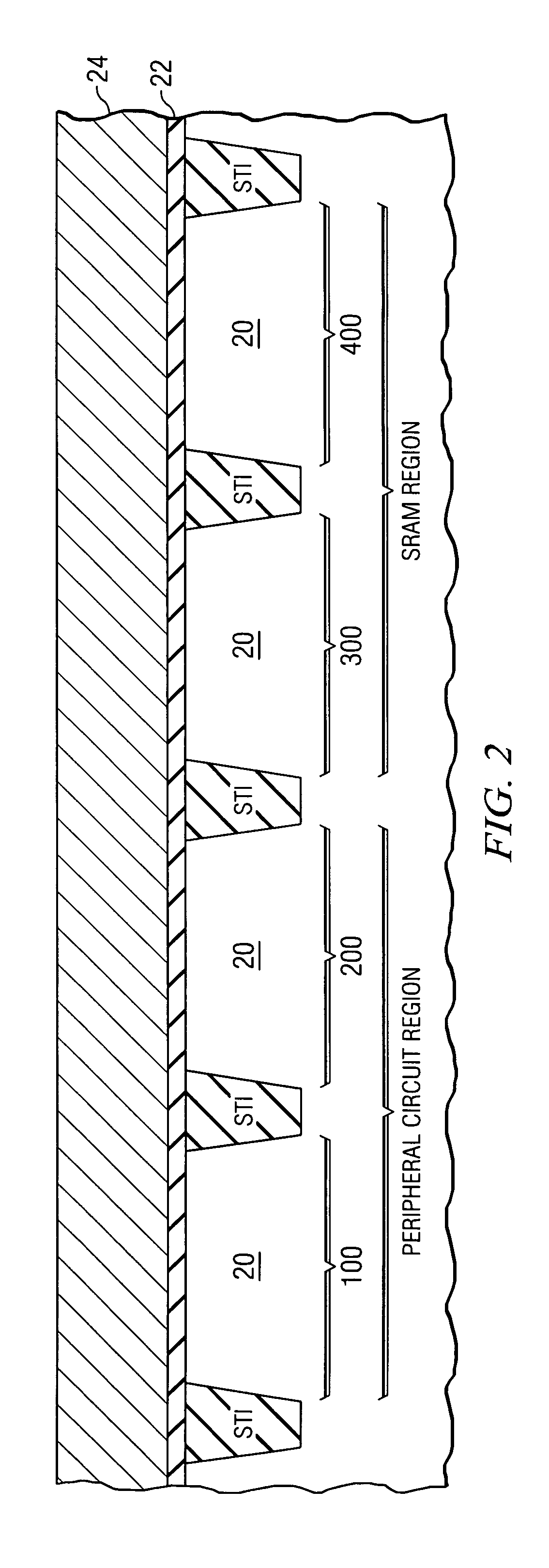Modifying work function in PMOS devices by counter-doping
a work function and counter-doping technology, applied in semiconductor devices, digital storage, instruments, etc., can solve the problems of difficult improvement of drive current of pull-down nmos devices, adversely affecting device drive current, and severe degradation of carrier mobility, so as to improve write speed and reliability, and increase write margins
- Summary
- Abstract
- Description
- Claims
- Application Information
AI Technical Summary
Benefits of technology
Problems solved by technology
Method used
Image
Examples
Embodiment Construction
[0020]The making and using of the presently preferred embodiments are discussed in detail below. It should be appreciated, however, that the present invention provides many applicable inventive concepts that can be embodied in a wide variety of specific contexts. The specific embodiments discussed are merely illustrative of specific ways to make and use the invention, and do not limit the scope of the invention.
[0021]The intermediate stages of manufacturing a preferred embodiment of the present invention, which combines the formation of PMOS and NMOS devices for peripheral circuits and SRAM cells, are illustrated. Throughout the various views and illustrative embodiments of the present invention, like reference numbers are used to designate like elements. It should be appreciated that although a SRAM region is referred to (and illustrated) throughout the description for simplicity, the present invention is readily applied to the design of inverters or any other circuits preferring b...
PUM
 Login to View More
Login to View More Abstract
Description
Claims
Application Information
 Login to View More
Login to View More - R&D
- Intellectual Property
- Life Sciences
- Materials
- Tech Scout
- Unparalleled Data Quality
- Higher Quality Content
- 60% Fewer Hallucinations
Browse by: Latest US Patents, China's latest patents, Technical Efficacy Thesaurus, Application Domain, Technology Topic, Popular Technical Reports.
© 2025 PatSnap. All rights reserved.Legal|Privacy policy|Modern Slavery Act Transparency Statement|Sitemap|About US| Contact US: help@patsnap.com



